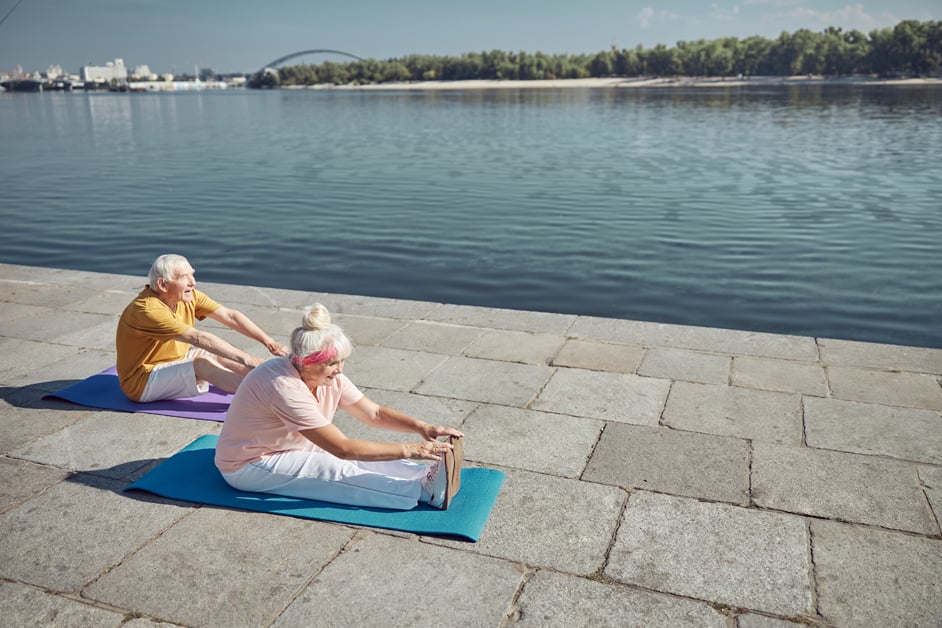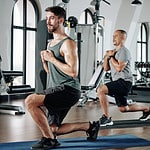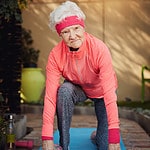Introduction
Swimming is a great, low-impact cardio exercise. But it can put extra strain on the knees – especially if done a lot or over long distances. Thankfully, there are stretches swimmers and triathletes can do afterwards to ease knee pain.
This guide outlines how hip and leg stretches can improve flexibility and reduce discomfort in the knees.
Causes of Knee Pain in Swimmers
Knee pain in swimmers is often due to overusing tendons, ligaments and cartilage in the joint. It’s called ‘Swimmer’s Knee’ or Patellofemoral Pain Syndrome. It can be very painful and affect performance.
Other causes of knee pain are:
- Weak muscles around the knee which cause an imbalance of forces and increased stress.
- Incorrect breaststroke or butterfly kick techniques putting too much pressure on the sides of the knees.
- Poor flexibility and tightness from a bad warmup leading to overworking some muscles.
It’s important to manage knee pain to avoid further injury or damage. Swimmers should have a good warmup and cool down routine. Stretching legs is important but needs to be done with guidance, as incorrect stretching can irritate injured tissues.
Cooling Down Stretches for Swimmers with Knee Pain
Swimming is a great way to exercise and stay cool. Unfortunately, it can hurt your knees! To prevent injury, it’s important to stretch after your swim. Here we discuss stretches for swimmers with knee pain. These stretches will help reduce discomfort and inflammation in the knee.
Quadriceps Stretch
The Quadriceps Stretch is essential for swimmer’s knee prevention and recovery. It helps with flexibility, stability, and range of motion.
- Stand upright, using a wall or chair to brace yourself. Bend your knee 90 degrees, so your heel approaches your glutes. Hold this position 15-30 seconds and relax. Repeat 1-2 times for each leg. As you hold each position, take deep breaths and focus on relaxing your body.
- You can also do the Quadriceps Stretch while lying down. Lay on your back, one leg bent in a 90-degree angle and the other leg extended out straight in front of you. Gently pull the bent knee towards you. Place both hands behind the knee near the ankle area and slightly above the kneecap area. Hold for 30 seconds, 1-2 times for each leg. Experiment by bending both knees at 90 degrees and interlocking your hands behind them. Pull them towards you while keeping them close together.
This exercise should not cause pain. Do it slowly, carefully and calmly to prevent injuries or worsen joint pain during recovery from swimming-related injuries or knee pain due to an excessive repetitive motion injury.
Hamstring Stretch
The hamstring stretch is a key part of the post-workout cooldown for those with knee pain. Its purpose is to release the tight muscles around the pelvis and upper leg, allowing better mobility in the knee joint when swimming.
To do the hamstring stretch:
- Sit on the floor with your legs straight out in front of you.
- Bend your right leg slightly and put your heel on the ground.
- Move your body forward until you feel a comfortable stretch in the back of your thigh (your hamstring). Keep your spine straight and your torso engaged.
- Hold for 15-30 seconds and then do the same on the other side.
- You can move side to side at the point of the stretch to target other muscles in those areas, such as the IT band and adductors.
- Don’t overstretch or push into discomfort. Keep it at an easy level so it’s a gentle release, not a strain on your ligaments or structures around the knee joint.
Gluteal Stretch
Lie on your back or sit in a chair.
- For the gluteal stretch, bring both knees up to your chest. If you can, wrap your arms around both shins. Gently rock from side to side to massage your thighs. Hold for 10 seconds, release, and repeat.
- When sitting in a chair, keep feet flat on the floor, hip width apart and hands pressing into the seat. Reach one leg out with toe facing up. Pull it as close to your torso as possible. Keep this leg close while straightening both legs. Make sure your spine is tall. Hold for 20-30 seconds, then rest. Repeat 2-3 times per side.
Calf Stretch
Swimming is a great exercise, especially for those with knee pain. To help reduce the risk of further injuries, it is important to stretch your legs and lower body after a swim session. A simple way to do this is by extending the calf muscles. This could help improve swim stroke mechanics, reduce water resistance and avoid pain or swelling around the knees and ankles.
To do a basic calf stretch, stand an arm’s length away from a wall. Put one foot in front of the other; the back foot should stay flat on the ground. Press into the wall with your front foot until you feel a small stretch in your calf muscle from ankle to knee. Hold this for 10-20 seconds then switch sides. Make sure your full body weight does not shift onto the toes of your back foot. Repeat until you find relief from any discomfort around the knee area.
Conclusion
Knee pain is common among swimmers, so it’s important to take steps to prevent injury. Stretching is a great way to keep joints mobile. These post-swim stretches target muscles used while swimming, not others. Hold each stretch slowly. Also, allow time for recovery after the stretches. This can reduce risk of knee pain and improve performance in the pool. Incorporate them into your daily post-swim routine.
- Stretching is a great way to keep joints mobile.
- Hold each stretch slowly.
- Allow time for recovery after the stretches.
- This can reduce risk of knee pain and improve performance in the pool.
- Incorporate them into your daily post-swim routine.
Frequently Asked Questions
Q1: What are some stretches I can do to help cool down after swimming with knee pain?
A1: There are some great stretches that can help cool down after swimming with knee pain. Try doing a standing quad stretch by standing with your feet hip-width apart. Bend your knee and bring your heel towards your butt. Hold onto your ankle with one hand and press your hip forward with the other. You can also do a seated hip flexor stretch by sitting on the edge of a seat. Keep your back straight and put one leg out in front of you. Bend the other leg and lean forward, keeping your back straight.
Q2: What other stretching activities can I do to help reduce knee pain?
A2: You can also do stretching activities like calf raises and leg swings to help reduce knee pain. To do calf raises, stand on the edge of a step with your heels hanging off. Slowly raise your heels and hold for a few seconds. Then, lower your heels back down. For leg swings, stand up straight and swing one leg in front of you and then to the side. Make sure to keep your back straight and your core engaged.
Q3: What other tips can I use to help with knee pain while swimming?
A3: You can also try using a foam roller to help reduce knee pain while swimming. Place the foam roller under the area of the knee that is causing the most pain and roll it back and forth. You can also try using an ice pack or cold compress to reduce swelling.





